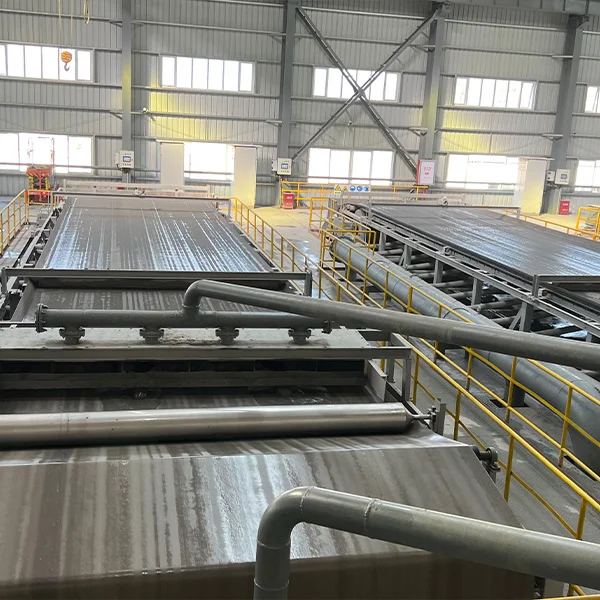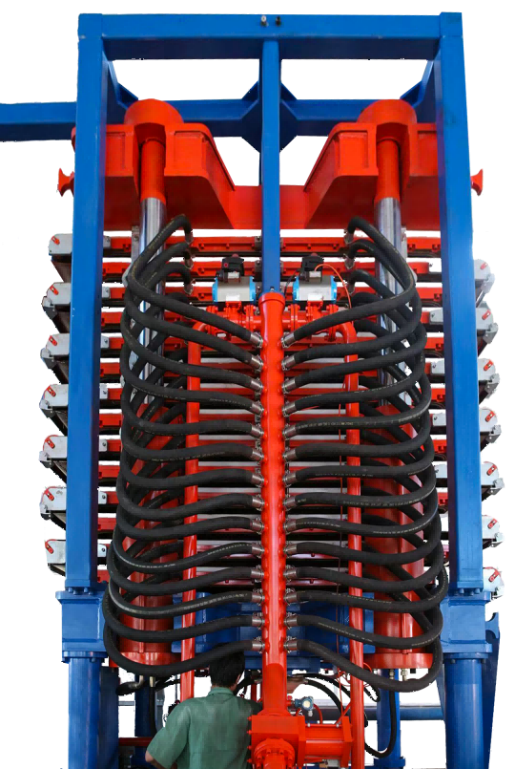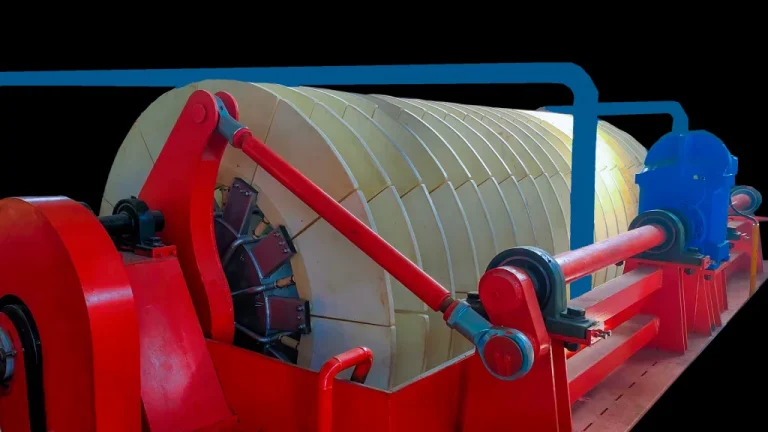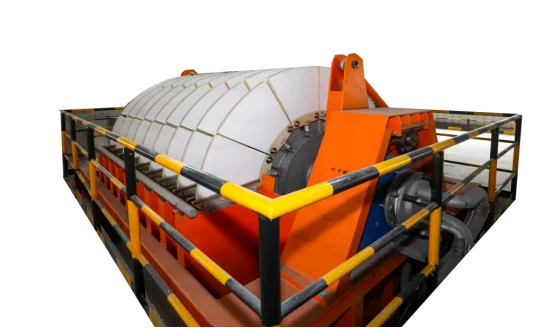Overview of Belt Filters in Waste Management

Understanding the Functionality of Belt Filters
Belt filters are top-notch tools for splitting solids from liquids. They’re known for their zip and flex across a bunch of trades. These setups run with a nonstop belt—usually rubber or filter cloth—that rolls along to pull solids apart from liquids. You dump slurry on the belt. Gravity and vacuum pull team up to yank out the wet stuff. That leaves a dry lump called filter cake behind. The horizontal vacuum filter is a slick piece that uses filter cloth to split things up. It leans on gravity and vacuum suck to get it done. This trick keeps the end product pretty dry—key for handling waste right.
Key Components of a Belt Filter System
The punch of belt filters comes from their build and main parts. Here’s the lineup:
- Rubber Belt:Hauls the slurry along and backs up the filtering gig.
- Filter Cloth:Sifts out solids while letting liquid slip through.
- Vacuum Box:Sucks hard to drag out the wet bits.
- Distributor:Spreads slurry even across the belt.
- Washing and Drying Zones:Clean up the filter cake and dry it more.
The system can go half-closed or full-on shut (air cover or aluminum-plastic windows) for tricky stuff that might float off. That keeps things snug or rounded up neat.
Applications of Belt Filters in Industrial Sectors
Belt filters are a must-have in tons of work fields thanks to their all-purpose vibe. They shine in mining for tailings cleanup, metallurgy for solid-liquid splits, petrochemicals for gypsum drying in flue gas cleanup, pharmaceuticals for spot-on filtering, and green efforts like sewage sludge treatment. They handle big loads fast—makes them a top pick everywhere.
Role of Belt Filters in Oil & Gas Operations
Solid/Liquid Separation Processes in Oil & Gas
In oil and gas jobs, splitting solids from liquids keeps gear humming and meets green rules. Belt filters step up big here. They pull out solids like drilling muds and sludges from waste streams. That means only clean water gets let out or reused. It cuts down on nature’s hit too.
Dewatering Sludges for Efficient Waste Management
Drying out sludges is a big deal for running oilfield waste smooth. Belt filters chop the water in sludges down low. That makes hauling, moving, and tossing it easier. The dried stuff’s got low wet levels—sets it up nice for more steps or shipping. It can even snag back some oil goodies stuck in the muck.
Reducing Transport and Storage Costs with Belt Filters
By cutting wet levels in waste, belt filters shrink its heft and bulk. That slashes hauling costs flat-out. It trims down space needs at dump spots too. Plus, tight filter cakes are a breeze to deal with for more work or chucking out.
Design and Operational Features of Belt Filters
The Four Main Zones in a Belt Filter System
A regular belt filter setup has four key spots:
- Feeding Zone:Slurry gets spread out even on the rolling belt.
- Filtration Zone:Vacuum suck pulls liquid off the slurry.
- Washing Zone:Extra rinse steps can boost cake purity.
- Drying Zone:Last bit of wet gets yanked for max dryness.
The rig uses a fixed vacuum box. A rubber belt rolls over it, powered by a motor. Each spot’s built to crank up filtering zip while keeping downtime low.
Importance of Feed Conditioning for Optimal Performance
Getting the feed ready right is a must for top-notch filtering. Pre-steps like clotting or clumping tiny bits into bigger chunks help them split from liquids better. Spreading the feed even across the belt keeps things steady too.
Advanced Technologies: Three-Belt Systems and V-Fold Belts
New twists like three-belt systems have flipped filtering tech. They toss in extra layers for sharper splits. V-fold belts boost cake buildup too—give filter cloths better backup while running. These upgrades pump up output and stretch gear life by cutting wear.
Challenges and Limitations of Belt Filters
Managing Variations in Feed Solids Concentration
One big headache with belt filters is juggling shifts in feed solids levels. How well they work ties tight to the slurry’s steady flow. Ups and downs in solids can mess up how it spreads on the belt. That hits filtering hard and might stall things. Clotting or clumping tricks get used to steady the feed. Smart controls in new belt filters watch and tweak feed settings on the fly too. That keeps them humming even when stuff changes.
Addressing Oil, Grease, and Odor Issues in Operations
In fields like oil and gas, slurries with oil, grease, and funky stuff can trip things up. Oil and grease gum up filter cloths—cuts filtering zip and ups fix time. Special cloths that fight clogging get paired with high-pressure rinse rigs to scrub them clean each round. Optional high-pressure washing steps perk up filter cloth life and kick too. Smells are a hassle too—especially with stuff that wafts off easy. Closed setups with air covers or aluminum-plastic windows lock in stink and keep the air clean.
Environmental and Economic Benefits of Belt Filters
Minimizing Liquid Waste for Landfill Disposal or Incineration
Belt filters cut down liquid waste headed for dumps or burn piles big-time. They split solids from liquids sharp—leave filter cakes with way less wet. The dried stuff’s low on moisture, making next steps or shipping a snap. That drops waste heft and bulk. It chops hauling and dump costs too. Plus, less liquid waste keeps landfill rules happy.
It’s good for nature too—cuts down leachate, that nasty juice from wet dump trash. Less of it means cleaner groundwater.
Optimizing Composting and Thermal Drying Processes
Belt filters set up composting and heat drying real nice by dishing out filter cakes with just-right wet levels. For composting, the right dampness keeps bugs busy breaking stuff down. Too wet slows it. Too dry drags it out. Belt filters keep moisture steady—speeds things up.
Heat drying wins with pre-dried stuff from belt filters too. Less wet to start means less fuel burned drying it. That saves cash and goes greener. The system can go half-closed or full-on shut (air cover or aluminum-plastic windows) for tricky stuff. It keeps things safe and lines up with green rules.

Frequently Asked Questions (FAQs)
What industries benefit most from using belt filters?
Belt filters get big play in mining for tailings cleanup, metallurgy for solid-liquid splits, petrochemicals for gypsum drying in flue gas cleanup, pharmaceuticals for spot-on filtering, and green gigs like sewage sludge treatment.
How do belt filters handle variations in feed solids concentration?
Smart controls in new belt filters watch feed settings live. They tweak stuff quick to keep things steady even when solids shift.
Can belt filters manage oily or greasy slurries?
Yep—special filter cloths that dodge clogs team up with high-pressure rinse rigs. They keep oily or greasy slurries in check and filtering smooth.
What measures are taken to address odor issues during operation?
Closed setups with air covers or aluminum-plastic windows trap smells tight. They stop stink from fouling the air too.
For more scoop on custom filtering fixes for your trade from Yantai Hexin Environmental Protection Equipment Co., Ltd., hit up our pro crew at YEDA Yantai City!









